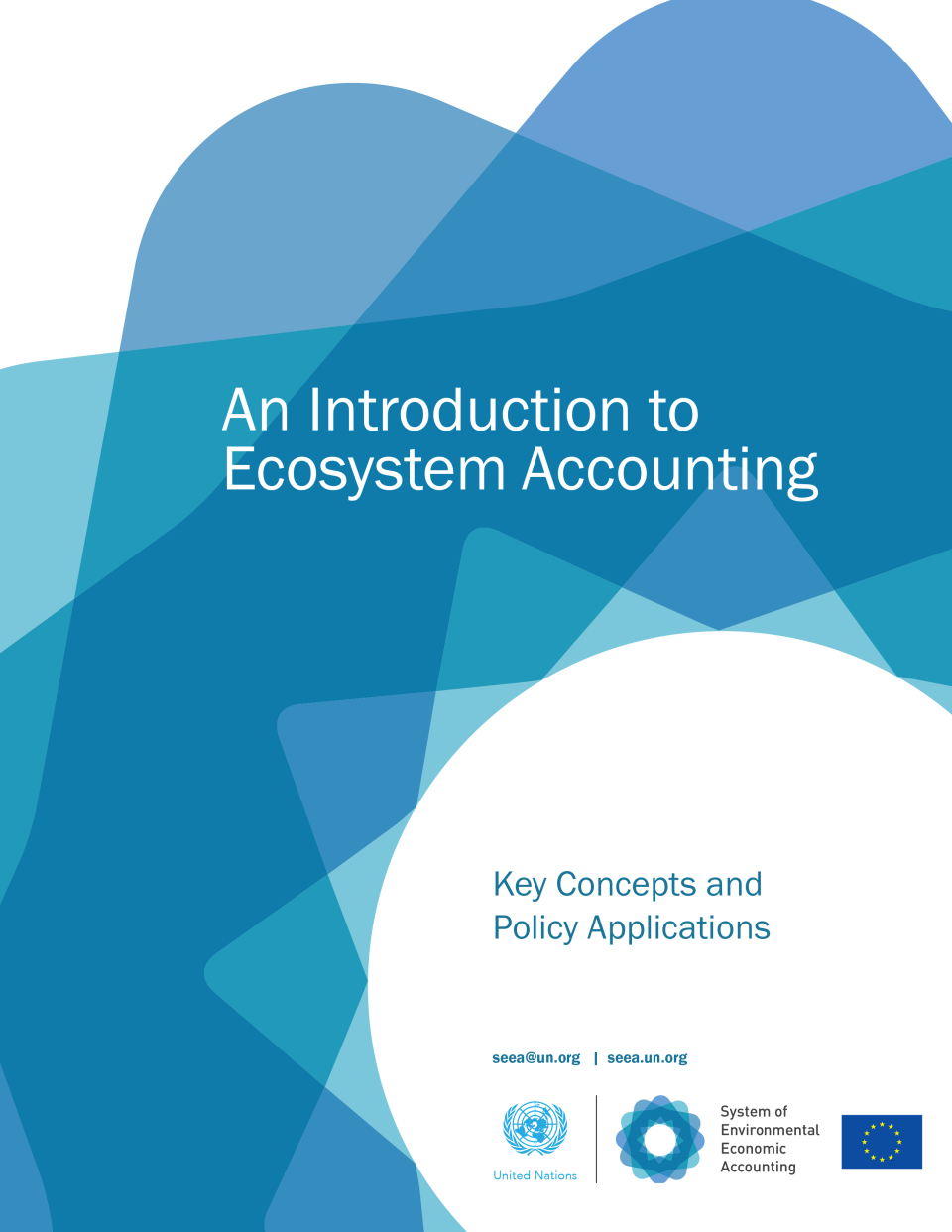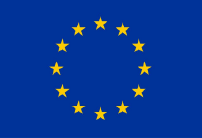Introduction to SEEA Ecosystem Accounting
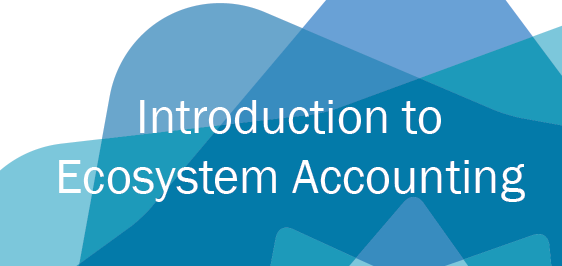
This introduction to the System of Environmental-Economic Accounting--Ecosystem Accounting (SEEA EA) framework provides an overview of its key concepts, types of accounts and applications. Its development was supported by the European Union.
Introduction
Biodiverse, healthy ecosystems provide essential contributions that humans depend upon in their daily lives - clean water, productive soils and flood control, to name just a few. But the economic contributions provided by this natural capital have too often been taken for granted when making important economic decisions.
The resulting overexploitation, habitat destruction and pollution of the natural world have created profound damage to the biosphere. Tragically, it is often the poorest and most vulnerable populations that most directly rely on the benefits of biodiversity and healthy ecosystems for their daily needs.
Humanity can no longer afford to ignore its dependence on a thriving environment rich in life. The calculations that guide crucial decisions must be changed so that nature and its benefits appear on the ledger. The approach best suited for this is natural capital accounting, which integrates nature and its benefits into existing decision frameworks.
The underlying premise of natural capital accounting is that since the environment is important to society and the economy, it should be recognised as an asset that must be maintained and managed, with its contributions (services) measured and considered in decision making.
Through the rigorous and consistent presentation of the connections between the economy and the environment, natural capital accounting provides essential information for the public and private sectors. The System of Environmental Economic Accounting (SEEA), adopted by the United Nations Statistical Commission in 2012, is the official international framework for natural capital accounting.
In recent years, ecosystem accounting has emerged as an innovative and exciting component of natural capital accounting. This introduction to the System of Economic Environmental Accounts Ecosystem Accounting (SEEA EA) framework provides an overview of its key concepts, types of accounts and applications.
The System of Environmental Economic Accounting
As the agreed-upon international standard for natural capital accounting, the System of Environmental Economic Accounts (SEEA) provides a common framework for organising and presenting statistics on the environment and its relationship with the economy. Placing environmental statistics into an accounting framework dramatically increases their usefulness for policy, enabling international comparability, replication over time and straightforward integration with existing national accounts.
The SEEA fills an important gap in official statistics. Mainline economic indicators like Gross Domestic Product (GDP) provide important information about the state of the economy but omit the crucial role of nature. For example, if a country cut down all its forests in a single year, this would increase GDP in the short term, thanks to increased timber production. However, such a move would be catastrophic for the country’s natural wealth, destroying the forest sector’s long-term viability and leading to irreversible environmental damage and massive long-term social costs. By integrating environmental assets and services with data on economic and other human activity, the SEEA expands the perspective and puts nature on an equal footing in decisions about economic development.
While statistical offices usually play a lead role in integrating data into the accounting framework, the process involves intensive collaboration across government ministries to prioritise accounts to be developed, bring together data from different sources and mobilise needed expertise. In fact, one of the great benefits of developing environmental economic accounts is the breaking down of data silos, closer interaction between users and producers of the accounts and greater coordination within governments. Depending on the institutional arrangement in countries, different agencies may play different roles. Nevertheless, the need for coordination and collaboration is at the centre of the accounts’ compilation and mainstreaming in the decision-making process.

The SEEA Central Framework (SEEA CF) was adopted by the UN Statistical Commission as the first international standard for environmental economic accounting in 2012. It takes the viewpoint of the economy and examines how natural resources like fish, timber and water are used in production and consumption, along with resulting pollution in the form of waste, water and air emissions. The figure below shows its general structure.

But the interactions between nature and the economy extend well beyond the harvesting, extraction and use of natural resources and associated pollution. The SEEA Ecosystem Accounting (SEEA EA) complements the Central Framework by taking the perspective of ecosystems and their contribution to human well-being in the form of identifiable ecosystem services.
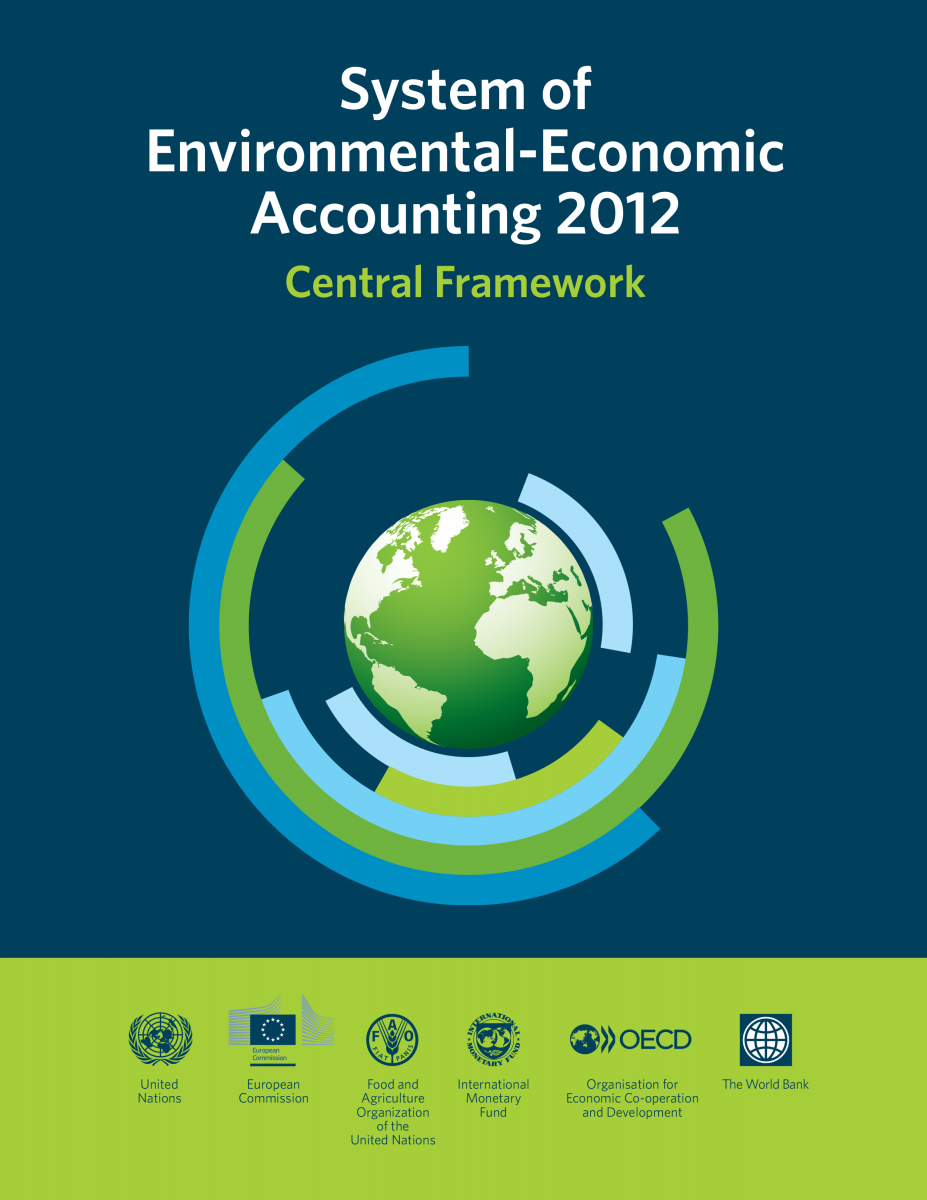 |
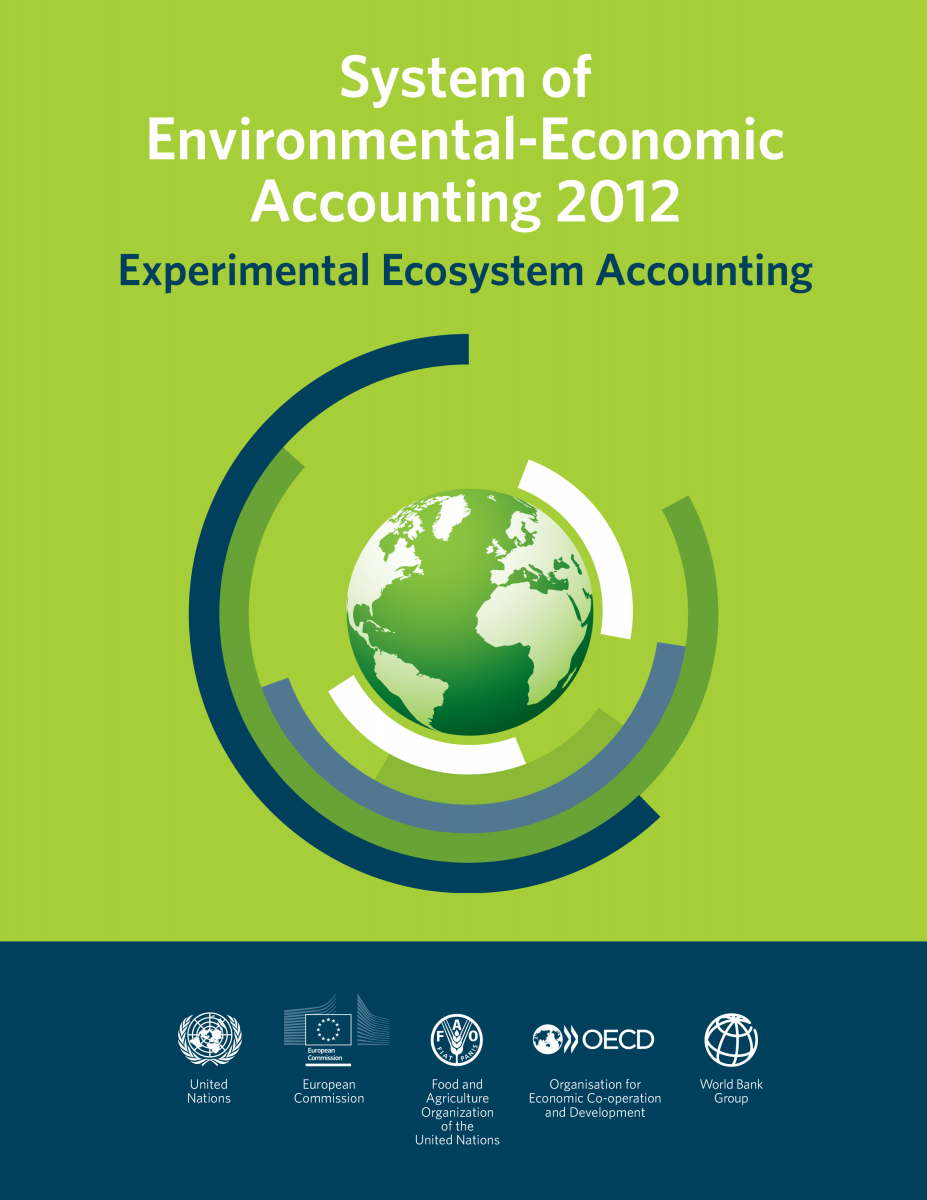 |
Together, the Central Framework and Ecosystem Accounting provide a comprehensive view of the environment-economy nexus and make nature’s invisible contributions to society visible.
The SEEA EA
History and current status
The SEEA Experimental Ecosystem Accounting (SEEA EEA) framework was endorsed by the United Nations Statistical Commission in March 2013 as an important first step in the developing a statistical framework for ecosystem accounting. It was released in 2014 as a joint publication of the United Nations, European Commission, Food and Agriculture Organization of the United Nations, Organisation for Economic Co-operation and Development and the World Bank. It has been supplemented by a companion publication, The Technical Recommendations in support of the SEEA 2012 - Experimental Ecosystem Accounting, which provides guidance on implementation and clarifies some outstanding conceptual issues. Both publications are available on the SEEA website: seea. un.org. The SEEA EEA is currently undergoing a major revision with the goal of moving beyond experimental status and being adopted as an official standard in 2021.
Ecosystem accounting is undergoing rapid growth and development, and accounts have already been used to inform policy development around the world. From a zero base in 2013, over 40 countries moving forward with ecosystem accounts by the end of 2019.

The United Kingdom and the Netherlands have published the most comprehensive accounts to date. Both countries’ accounts include detailed maps and physical and monetary accounting tables with consistent applications of concepts and methods.
In many other countries, progress is being made towards comprehensive SEEA EA accounts. Australia has published two national and several sub-national accounts. Other countries with published accounts include Canada, Costa Rica, Colombia, Indonesia, Italy, Norway, Mexico, Netherlands, the Philippines, Rwanda, Spain and Uganda. The five countries participating in the EU-funded project Natural Capital Accounting and Valuation of Ecosystem Services (NCAVES) project - Brazil, China, India, Mexico and South Africa - will shortly publish selected ecosystem accounts. Supranational accounts have been developed for the European Union.
Structure of the SEEA EA
To understand the logic of the SEEA EA, consider the role that forests play in providing communities with clean water. Forests act as natural water filters, with trees and other plants absorbing nutrient pollution like nitrogen and phosphorous before it can flow into streams, rivers and lakes. This natural system provides benefits for humans – studies have shown that communities downstream of intact and healthy forests spend less on water treatment, all else equal, than communities that live downstream of degraded forests.
Therefore, an ecosystem, based on its overall health, delivers important services that produce benefits to identifiable populations. The SEEA EA provides a robust picture of these contributions by explicitly distinguishing among this chain’s different components.


The Core EA Accounts
There is not one single, all-encompassing ecosystem account; instead, there are five core accounts that make up the building blocks of the SEEA EA. These accounts constitute an accounting system which presents a comprehensive and coherent view of ecosystems.
ECOSYSTEM EXTENT accounts record the total area of each ecosystem, classified by type within an ecosystem accounting area. Ecosystem extent accounts are measured over time in a specified area (e.g. nation, province, river basin, protected area, etc.) thus illustrating the changes in extent from one ecosystem type to another over the accounting period.
ECOSYSTEM CONDITION accounts record the condition of ecosystem assets in terms of selected characteristics at specific points in time. Over time, they record the changes to their condition.
ECOSYSTEM SERVICES physical and monetary accounts record the supply of ecosystem services by ecosystem assets and the use of those services by economic units, including households.
ECOSYSTEM MONETARY ASSET accounts record information on stocks and changes in stocks (additions and reductions) of ecosystem assets. This includes accounting for ecosystem degradation and enhancement.
THEMATIC ACCOUNTS are standalone accounts, or sets of accounts, that organise data around specific policy-relevant themes. Biodiversity, ocean and carbon are three high profile themes. Other important thematic accounts include accounting for protected areas, wetlands, forests and urban areas.
Key Features of the SEEA EA
One of the distinguishing characteristics of the SEEA EA is that it takes a spatial approach since the benefits arising from ecosystems depend inherently on where they occur. This spatial focus helps identify the location of critical ecosystem assets and services along with their specific beneficiaries (households, businesses and governments). Accounting tables are commonly supplemented with maps as an effective mode of presentation, bringing together multiple layers of information (geographical, environmental, ecological, economic) in one place. Figure 6 shows a hypothetical example of an ecosystem extent account developed by integrating multiple spatial data sets. The spatially explicit information generated by the SEEA EA enables the effective targeting of policy efforts.
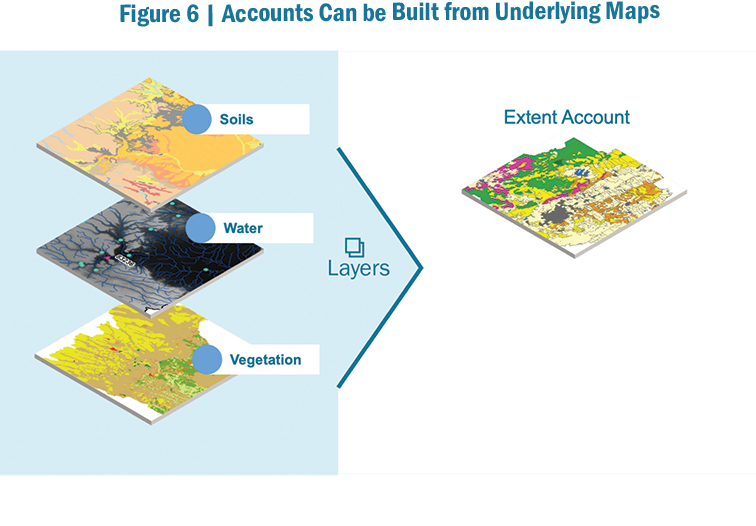
One of the great advantages of an accounting framework is that it allows the contributions of ecosystems to be expressed in monetary terms. This is not a trivial exercise. Most ecosystems services are public goods lacking markets that provide clear prices to aid in valuation. Their value, therefore, must often be estimated using economic valuation techniques. The SEEA EA is at the forefront of developing rigorous monetary estimation approaches that are consistent with the System of National Accounts.
Monetary estimates supply useful information for decision-makers, for example in discussions with ministries of finance or in budget allocation processes. They are also helpful for using a cost-benefit framework to assess specific policies and projects, the development of environmentally-adjusted economic aggregates and for raising awareness around the economic contributions of ecosystems. But monetary valuation is by no means a necessary feature of ecosystem accounting, and there are numerous examples of ecosystem accounting efforts that use only physical measures.
The SEEA EA provides users with enormous flexibility. Accounts can be compiled at the subnational (state, river basin, protected area, urban, etc.), or national level and across terrestrial, freshwater and marine areas. Ecosystem assets and their services can be presented in physical terms (e.g. hectares, tons) and monetary terms. Not all accounts need to be compiled, with their development dependent upon national priorities and data availability.
Use of the SEEA EA in Policy
With its flexibility, the SEEA EA can be applied to a wide range of policy questions at the heart of the global sustainability agenda. Ecosystem accounting is undergoing rapid growth and development and accounts have already been used to inform policy development around the world.
Indonesia's carbon accounts for peatland
Indonesia’s recent development of pilot accounts for its peat forests provides an example of how ecosystem accounting can deliver important, policy-relevant information. Peatland covers around eight per cent of Indonesia. It is important for the cultivation of oil palm, a major export commodity, as well as timber production and biomass production for pulp. It also delivers an important ecosystem service in the form of carbon sequestration. However, there is strong demographic pressure to convert peatland to cropland or plantation forestry.
With the World Bank’s assistance, Indonesia developed pilot accounts for peatland in the Sumatra and Kalimantan regions.
The analysis revealed that 52% of peat forests in the two regions had been converted to other land uses during the period 1990-2014, with greater losses occurring in Sumatra.
The accounts reveal that conversions were associated with significant oil palm production increases, generating high monetary value. However, they also resulted in a 31% loss of carbon stocks from 1990 to 2014 and a 74% increase in net carbon emissions during the same period, making degraded peatland a significant source of Indonesia’s GHG emissions. Depending upon the value attributed to the emitted carbon, the costs of these emissions may exceed the benefits of the plantation cropping. The data from the accounts provide an important input for the development of Indonesia’s National Action Plan to Reduce Greenhouse Gas Emissions.
South Africa's River Accounts
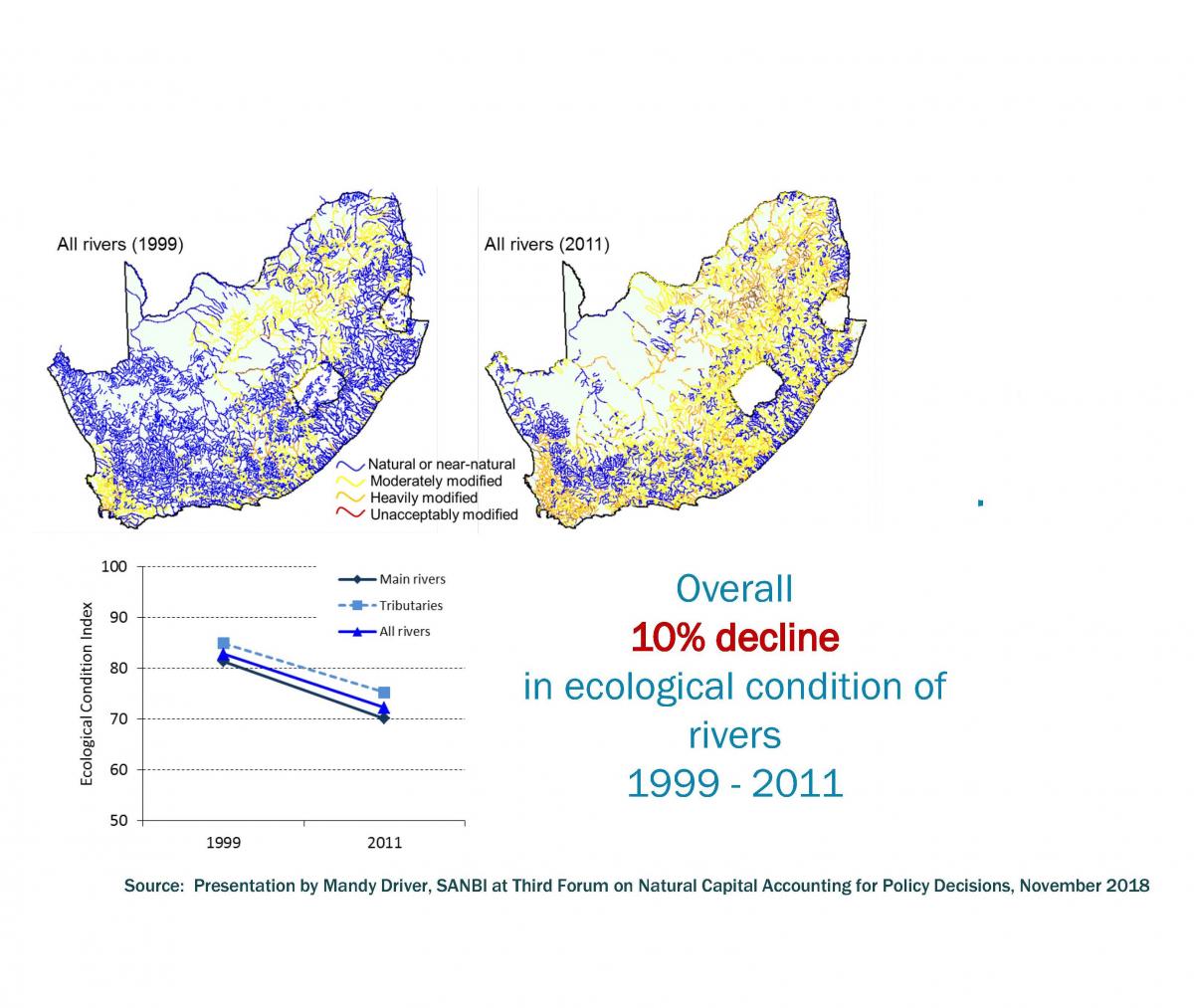 |
South Africa is a water-scarce country, and water ecosystems are critical to providing a reliable supply of clean water for the South African people and economy. In 2014, South Africa piloted accounts for river ecosystems using the SEEA framework to identify areas where river quality has declined. The key finding from the river accounts was that the ecological condition of South Africa’s rivers declined by 10% from 1999 to 2011. |
Source: Nel, J.L. & Driver, A. 2015. National River Ecosystem Accounts for South Africa. Discussion document for Advancing SEEA Experimental Ecosystem Accounting Project, October 2015. South African National Biodiversity Institute, Pretoria.
This information is informing the National Water and Sanitation Master Plan, which highlights the importance of maintaining the integrity of freshwater ecosystems as part of the water value chain. The accounts also have identified the areas where the decline in river health has been most pronounced so that solutions can be identified and targeted to better manage catchments and rivers to support economic and social development.
Uganda's species accounts
In northern Uganda, the indigenous Shea tree is an important source of income for rural communities, thanks to international demand for shea nut butter extracted from the tree’s seeds. The tree is under severe pressure and endangered due to overexploitation for timber, firewood and charcoal production.
Uganda’s species account for the Shea tree revealed a substantial decline in coverage from 1990-2015 (Table 1). By overlaying biodiversity data with information on land use, the accounts reveal significant potential for sustainable Shea butter tree nut harvesting outside of protected areas (Figure 7).
| Total Closing Stock (2015) | Unprotected Closing Stock (2015) |
|---|---|
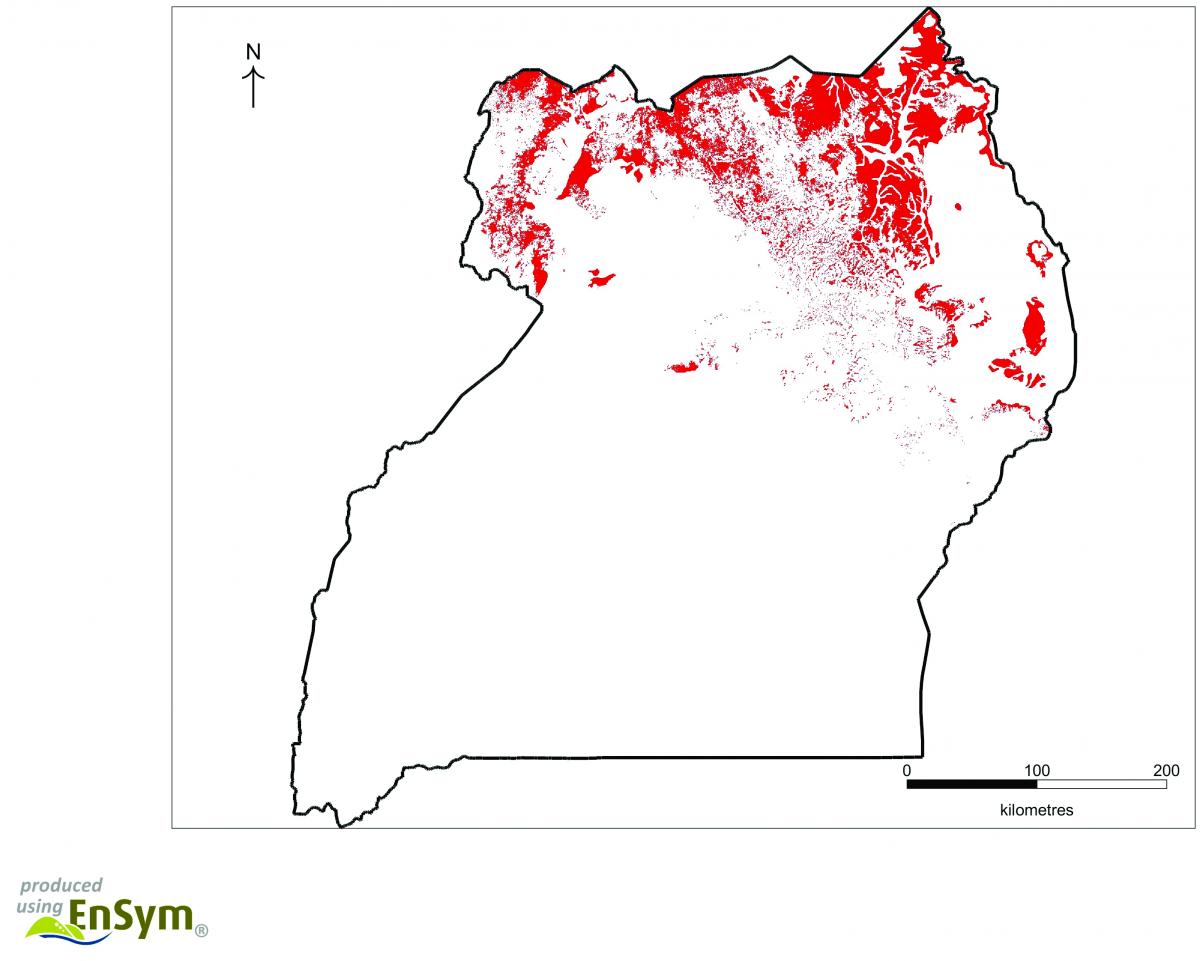 |
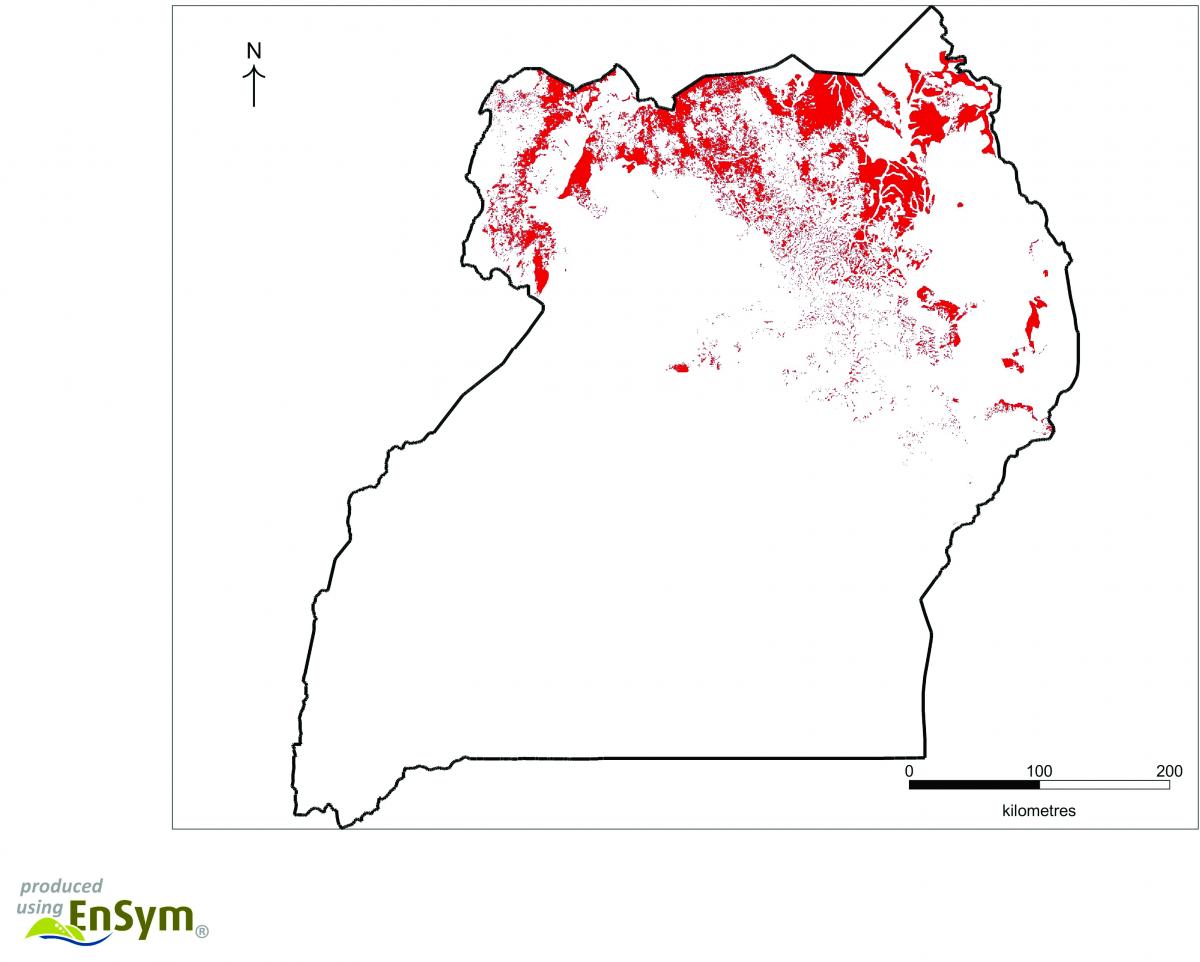 |
Source: King, S., Eigenraam, M., Obst, C., Vardon, M., Juhn, D. (2018) Revisiting the role of natural capital accounting for biodiversity conservation – discussion and a case study from Uganda. Chapter 11 In Ruijs, A. and Vardon, M. (Eds) (2018). 2nd Policy Forum on Natural Capital Accounting for Better Decision Making: Applications for Sustainable Development - Part 2: Case Studies. World Bank WAVES, Washington D.C https://www. wavespartnership.org/sites/waves/files/kc/2nd%20Policy%20 Forum_Publication%20part%202.pdf
Together, these findings highlighted the economic value of conservation of the Shea tree, prompting innovative government programs and local partnerships that support its sustainable management.
Ecosystem Accounting and the Global Sustainability Agenda
As a standard international framework, the SEEA EA is particularly well-suited to support important global environment and development initiatives. Its comparability across time and nations makes it ideal for use as a monitoring framework. Its rigorous foundation means that it can generate credible information for implementation plans. Its consistency promotes efficiency and helps avoid one-off initiatives that result in the duplication of effort.
The SEEA provides the data backbone for much of the global sustainability agenda, including:
→ Monitoring of the Sustainable Development Goals, including progress towards Goals 6, 11, 12, 13, 14 and 15
→ The regional and global assessments of the Intergovernmental Science-Policy Platform on Biodiversity and Ecosystem Services (IPBES)
→ The post-2020 Biodiversity Agenda of the Convention on Biological Diversity
→ The development of wealth accounting encompassing measures of the value of natural capital
→ Supporting the Land Degradation Neutrality policy under the UN Convention to Combat Desertification (UNCCD)
→ Supporting the measurement of biodiversity and ecosystem services for The Economics of Ecosystems and Biodiversity (TEEB) project
Policy Questions the SEEA EA Can Answer
The current applications of ecosystem accounting, while extremely impressive, have only scratched the surface of its potential. Policy relevant questions that ecosystem accounting can help answer include:
→ What is the contribution of ecosystems and their services to the economy, social wellbeing, jobs and livelihoods?
→ How is the condition, health and integrity of ecosystems and biodiversity changing over time and where are the main areas of degradation and enhancement?
→ How can natural resources and ecosystems be best managed to ensure continued services and benefits such as energy, food supply, water supply, flood control, carbon storage and recreational opportunities?
→ How should conservation efforts be targeted?
→ What opportunities exist for the development of innovative incentive-based programs to conserve nature such as payment for ecosystem services?
→ What do estimates of a nation’s wealth and economic potential look like once the state of its environment is considered?
Resources to Support the Development of SEEA Accounts
The Global Environmental Facility (GEF) has included natural capital and environmental accounting as one of its priorities in its latest round of investments (GEF- 7). This represents a significant opportunity to increase the development and implementation of SEEA accounts in support of the post-2020 agenda. Members of the UN Committee of Experts on Environmental-Economic Accounting are ready to offer technical assistance to help build capacity in developing countries, in particular, least developed countries and small island developing States, as well as countries with economies in transition.
Extensive information is available at seea.un.org, including technical guidance, up-to-date information about the status of the SEEA-EEA revision, a calendar of upcoming meetings and events, and online courses in ecosystem accounting in English and Spanish.
The Ecosystem Accounts
One of the strengths of the SEEA EA framework is its modular composition. There is no single, all-encompassing ecosystem account; instead, there are five core ecosystem accounts in the SEEA EA. Taken together, these accounts provide a coherent view of the ways that ecosystems support economic and social well-being. Not all accounts need to be developed; their compilation can be based on the needs of decision-makers.
This section provides more detail on the core accounts of the Ecosystem Accounting framework:
→ Ecosystem extent accounts
→ Ecosystem condition accounts
→ Ecosystem services accounts
→ Ecosystem monetary asset accounts
There are also accounts for specific subject areas. This section provides an overview of two such accounts: species and carbon. Other accounts are also being pursued topics such as oceans and protected areas. Visit seea.un.org to learn more.
Ecosystem Extent Accounts
This account serves as a common starting point for ecosystem accounting. It organises information on the extent of different ecosystem types (e.g. forests, wetlands, agricultural areas, marine areas) within a spatial area (administrative region, river basin, etc.) in terms of area.
Ecosystem accounts describe the environment in terms of sets of mutually exclusive (i.e. non-overlapping) ecosystem assets (EA). These assets can be classified by different ecosystem types (ET) such as forests, wetlands, cropland etc. All assets together populate the Ecosystem Accounting Area (EAA), and examples include a municipality, a state, a river basin, a country etc. Figure 10 shows an ecosystem accounting area, which could be an administrative region with different ecosystem types.
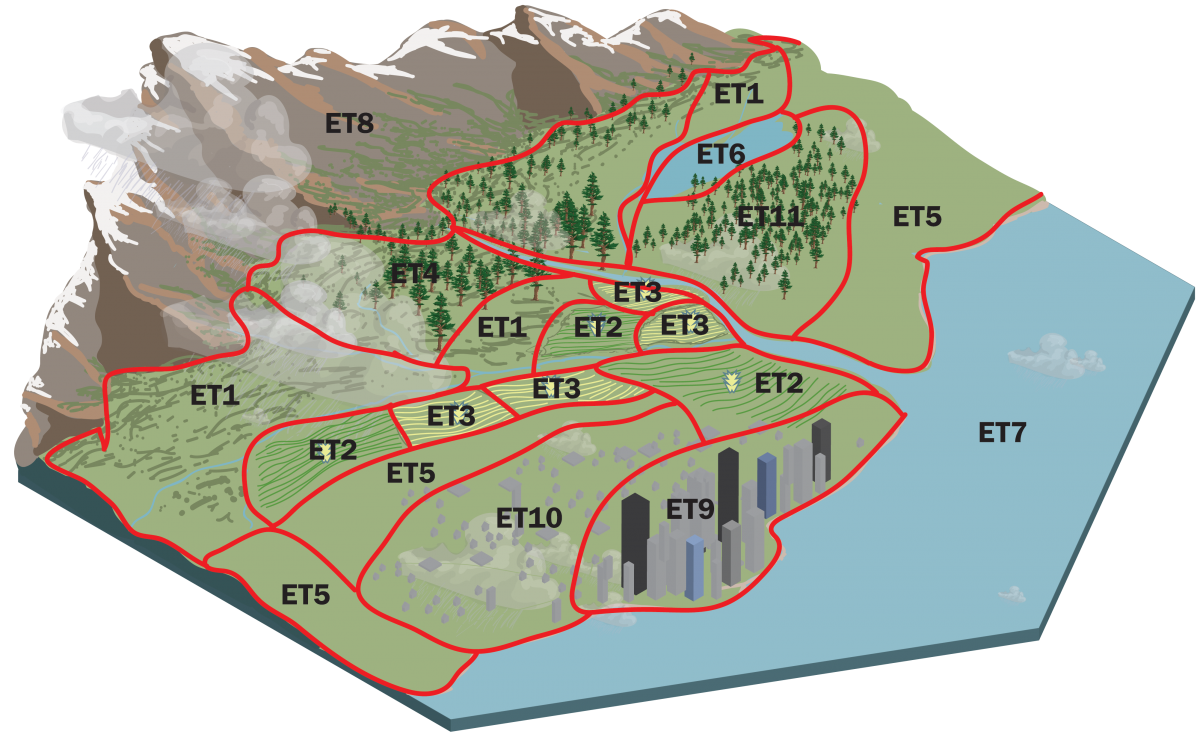
Extent accounts can play a role in implementing global commitments and tracking their progress. For example, by overlaying the extent account with information on protected areas, it is possible to track Aichi targets such as goals for percentages of land set aside for ecological protection. The extent account is an important building block for the development of specific thematic accounts, such as protected area accounts.
Extent accounts provide important insights, particularly if the data allows for time series analysis. Table 1 shows the kind of detailed information that can be presented. It reveals long-term changes in land-cover in Mexico, including a large increase in the amount of land used for human settlements and reductions in both primary and secondary rainforest from 2002 to 2014. These data can be integrated with socio-economic data to allow for sophisticated analysis of potential policy options.
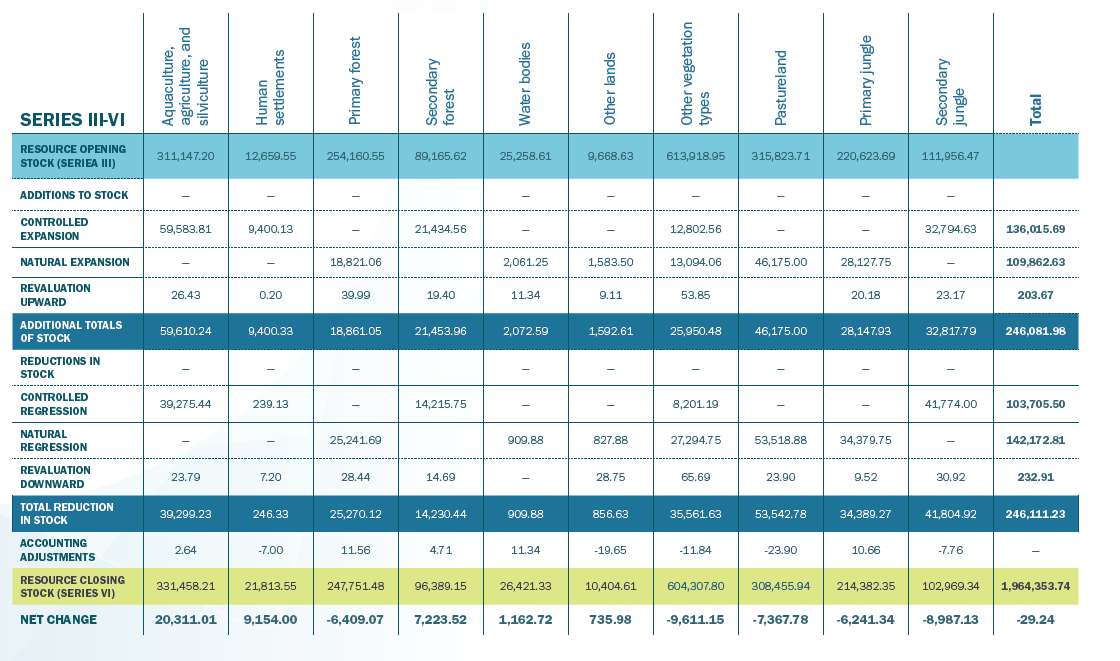
Source: INEGI
Ecosystem Condition Accounts
This account measures the overall quality of an ecosystem asset and captures, in a set of key indicators, the state or functioning of the ecosystem in relation to both its naturalness and its potential to supply ecosystem services.
Condition accounts are built up from spatial data (underlying maps) on various indicators of ecosystem status. For every ecosystem type (e.g. forest or inland water bodies), a reference level is provided against which values for indicators can be compared over time. A wide range of indicators that can be assessed in the condition account, and they can be ecosystem-type specific.
In early 2020, the UK Office of National Statistics released Woodland Natural Capital accounts providing information on woodland extent, condition and ecosystem services. The metrics employed for ecosystem condition included woodland age structure, the variety of trees present, presence of different mammals and birds, the understory vegetation and the presence of deadwood.
The assessment relied on data collected between 2009 and 2015 for the National Forest Index survey by Forest Research, the UK’s principal organisation for forestry and tree-related research. Ecologists regularly use a simple set of qualitative descriptors to summarise the overall status of a habitat or species: “Favourable” being good, “Unfavourable” being bad, and “Destroyed” meaning the habitat at a site is no longer present, and there is no prospect of being able to restore it.
The review found a mixed picture: 85 per cent of woodlands were found to be favourable in terms of tree health, but two of the seven National Forest Index indicators were considered unfavourable across the majority of woodland: the presence of veteran trees and deadwood.
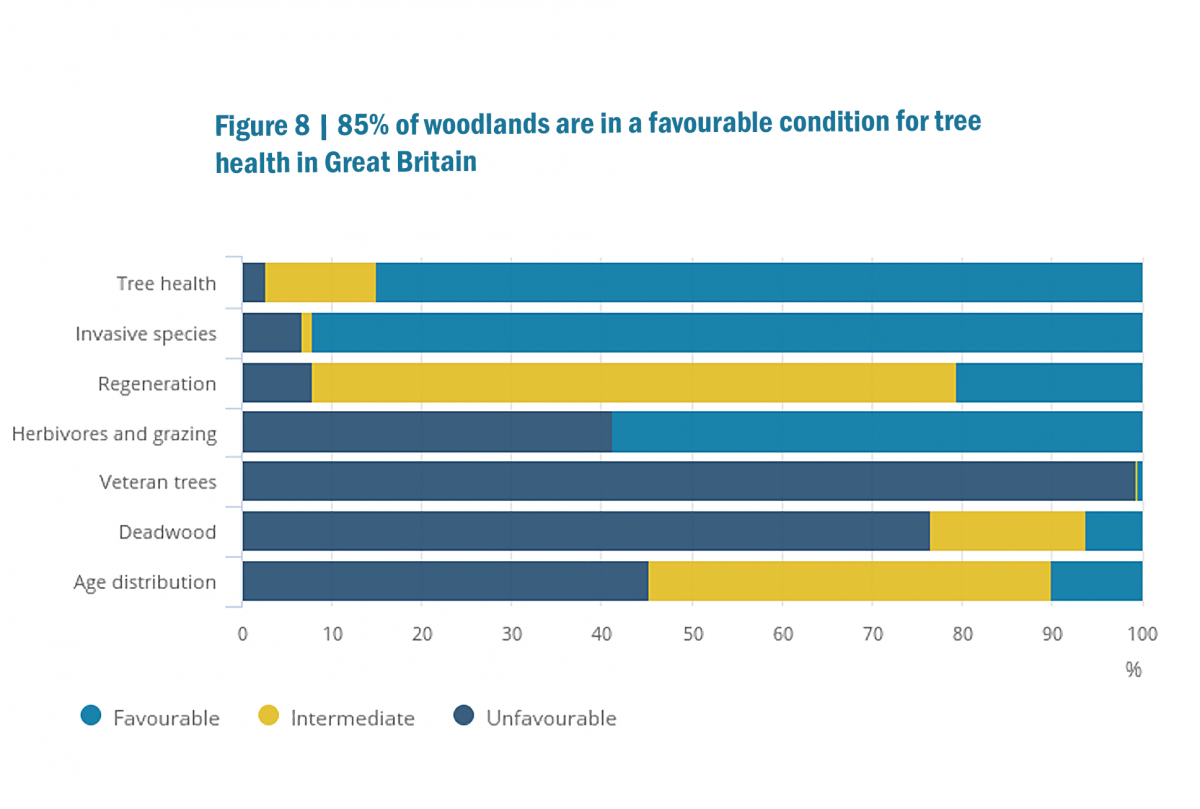
Biodiversity measures (see Thematic Accounts) can be used as components of ecosystem condition accounts. The Woodland Natural Capital Accounts revealed long- term declines in bird and butterfly populations.
 |
 |
Ecosystem Services Accounts
This set of ecosystem accounts measures the supply of ecosystem services and their corresponding use and beneficiaries, classified by economic sectors used in the national accounts. The ecosystem services accounts can be compiled in both physical and monetary terms.
In the SEEA EA, ecosystem services are defined as “the contributions of ecosystems to benefits used in economic and other human activity.” The SEEA EA uses the following three broadly agreed on categories of ecosystem services:
(a) Provisioning services, which represent the material and energy contributions generated by or in an ecosystem to economic and human activities,
for example, fish or plants with pharmaceutical properties extracted for final consumption by households or intermediate consumption.
(b) Regulating services, which result from the ecosystems regulating climate, hydrologic and biochemical cycles, earth surface processes and various biological processes. These services often have an important spatial aspect.
(c) Cultural services, which are generated from the physical settings, locations or situations that give rise to intellectual and symbolic benefits experienced by people from ecosystems through recreation, knowledge development, relaxation and spiritual reflection.
By expanding the national accounts production boundary, the accounts also recognise a range of ecosystem services that lead to benefits that are not currently recognised in the System of National Accounts such as carbon storage and air filtration.
Ecosystem service supply and use accounts are used for informing a range of policies. The accounts can be used for land-use planning purposes as they enable the assessment of trade-offs. These accounts have also been used to inform policy instruments such as eco- compensation standards and Payment for Ecosystem Services schemes.
A 2019 study estimated the monetary value of six ecosystem services in the European Union for 2012: crop provision, timber provision, carbon storage, pollination. flood control and nature-based recreation The total of all six ecosystem services accounted for at the EU level were valued at €124.87 billion for 2012. At €50.4 billion, nature-based recreation was the ecosystem service with the highest absolute monetary value of all ecosystem types, representing 40% of the total.

Source: Vallecillo S, La Notte A, Ferrini S, Maes J (2019) How ecosystem services are changing: an accounting application at the EU level. Ecosystem Services 40 https://doi.org/10.1016/j.ecoser.2019.101044
Monetary Asset Accounts
This account records the monetary value of opening and closing stocks of all ecosystem assets within an ecosystem accounting area along with additions and reductions to those stocks.
The ecosystem services supply accounts provide an estimate of the total annual flow of services that is generated during the accounting year. The value of the ecosystem assets can be estimated by capitalising the value of the annual flows of services over the ecosystem’s expected lifetime using the Net Present Value method. Estimating these values also requires consideration of the capacity of the ecosystems to sustain the flows of services, which in turn depends on ecosystem condition and extent and the management of the ecosystem.
The valuation of natural capital flows allows for the estimation of natural capital asset value and more comprehensive assessments of the wealth of a country (covering natural capital in addition to produced capital, financial capital, human and social capital). Indicators such as wealth per capita and its change over time provide an indication as to whether the country is growing on a sustainable path.
Figure 15 shows UK natural capital asset value estimates for 2016 contributed by selected ecosystem services. Recreation accounted for 40 per cent of the total. Interestingly, the composition of the contributions is changing over time. Figure 16 shows that between 2009 and 2016, the asset value of renewable energy sources increased by 133 per cent, while the value of fossil fuels dropped by over 50 per cent.
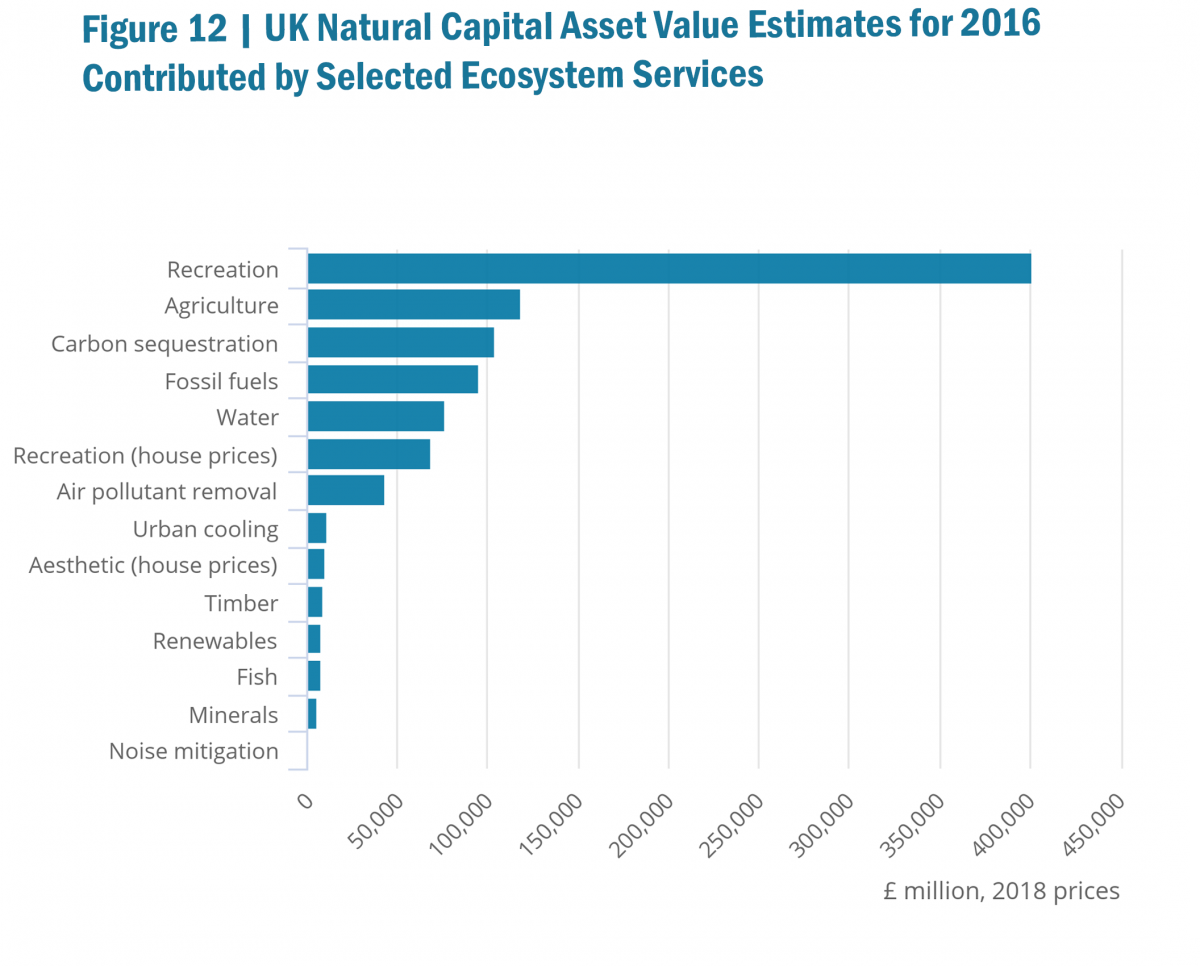 |
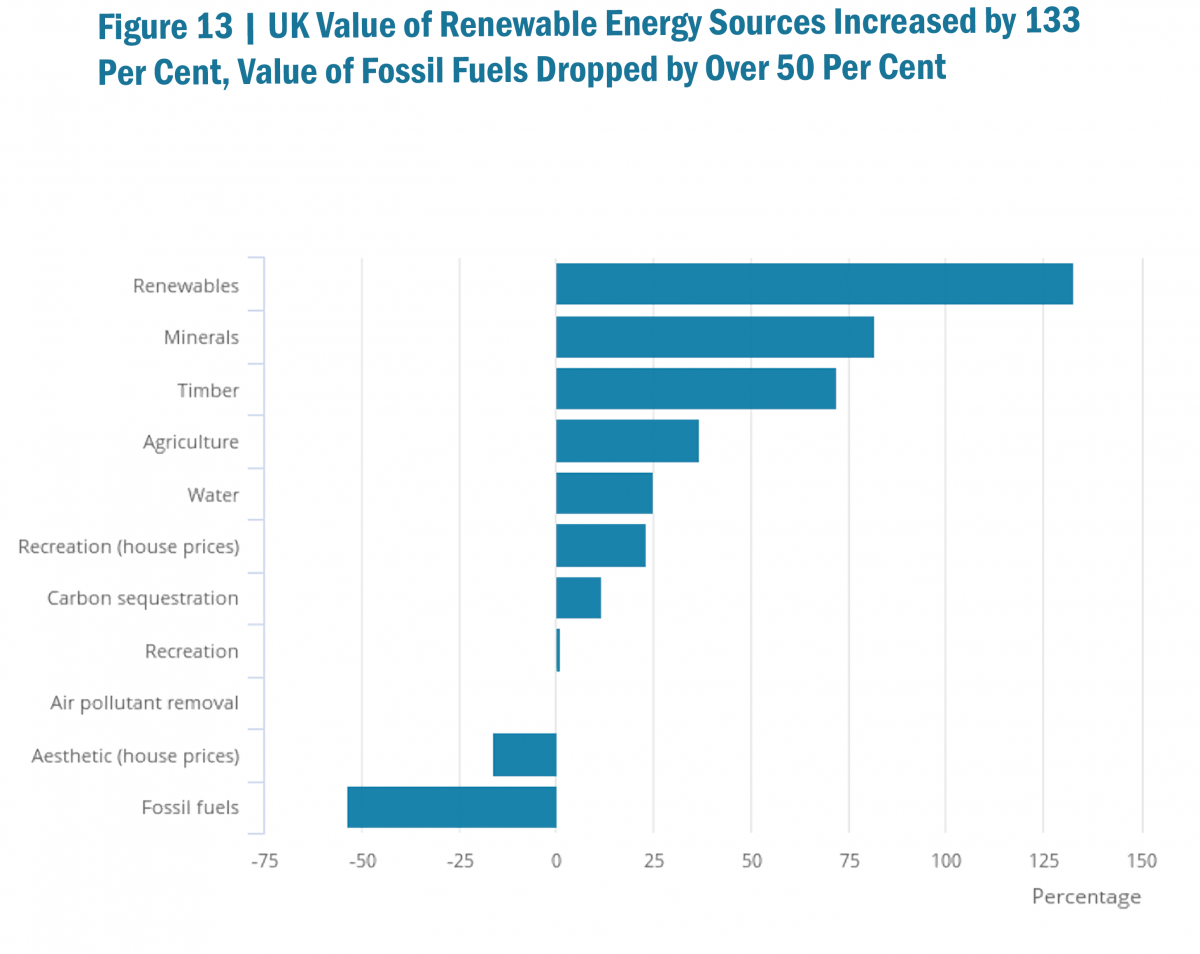 |
Source: Office of National Statistics (2019) UK natural capital accounts: 2019 Estimates of the financial and societal value of natural resources to people in the UK
Thematic: Species
Species accounts focus on measuring stocks and changes in stocks of specific species.
The species account has the structure of an asset account, i.e. describing the opening stock in a specific year and the closing stock. The account explains the observed addition and reduction in stocks of selected species.
The compilation of species accounts for an entire national territory can inform a broad range of policymakers about the impact their decisions may have on species (e.g. threatened species, endemic species, flagship/iconic species etc.) as well as biodiversity hotspots.
Uganda has piloted accounts for its chimpanzee population habitat, allowing for the assessment of changes from 2005 to 2015. The chimpanzee accounts show small, positive changes in the extent of fully suitable habitat for chimpanzees in South Western Uganda. A majority of this habitat covered by the protected areas estate that could support wildlife tourism. However, significant losses in fully suitable habitat are observed in the Western subregion.
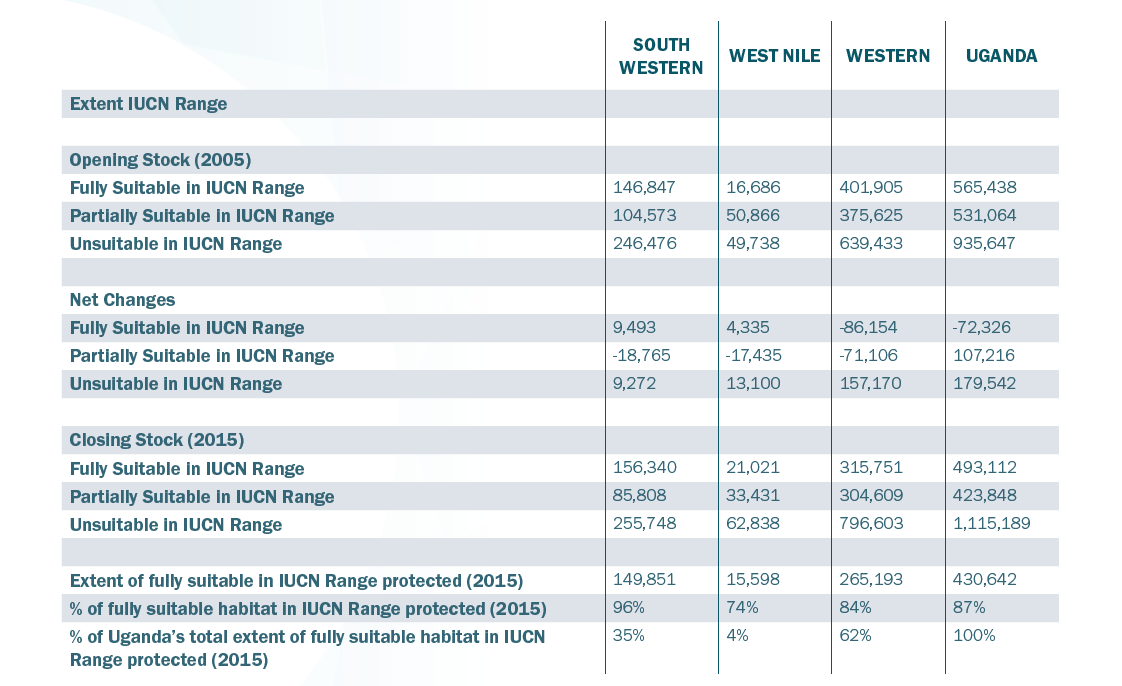
Source: Table 27 Extent of Chimpanzee Suitable Habitat in IUCN Ranges 2005 to 2015 (hectares”) from UNEP-WCMC & IDEEA (2017) Experimental Ecosystem Accounts for Uganda. Cambridge, UK. www.wcmc.io/0524
Thematic: Carbon
The carbon account provides a comprehensive overview of all relevant carbon stocks (above and below ground) and flows (sequestration and emissions) that take place in an area / country.
The carbon account was developed to allow for a consistent and comprehensive account of carbon stocks and flows in the reservoirs of ‘biocarbon’ (organic carbon in soils and biomass), ‘geocarbon’ (carbon in the lithosphere), atmospheric carbon and carbon in the economy. The carbon account can be compiled by combining datasets from numerous sources and using various models.
The SEEA EA carbon account can be used to answer a range of questions related to such issues as: 1) where and how much carbon is currently ‘in stock’ in a country and in what form, 2) the magnitudes of natural and anthropogenic emissions of carbon, 3) the location and strength of natural sinks for carbon (i.e. carbon sequestration), 4) the economic sectors that contribute most to emissions.
|
Carbon is central to the functioning of ecosystems and is related to many of the core accounts of ecosystem accounting. For example, it plays a role in ecosystem services (e.g. supply of wood and other biomass, and carbon sequestration) and ecosystem condition (for example, soil carbon content influences crop productivity). This example from The Netherlands shows the power of the spatial approach that the SEEA EA brings. Figure 13 provides a broad picture of the critical areas for carbon sequestration in the country. This empowers regional and local stakeholders to take effective action to sequester carbon, for example, by modifying land-use practices. |
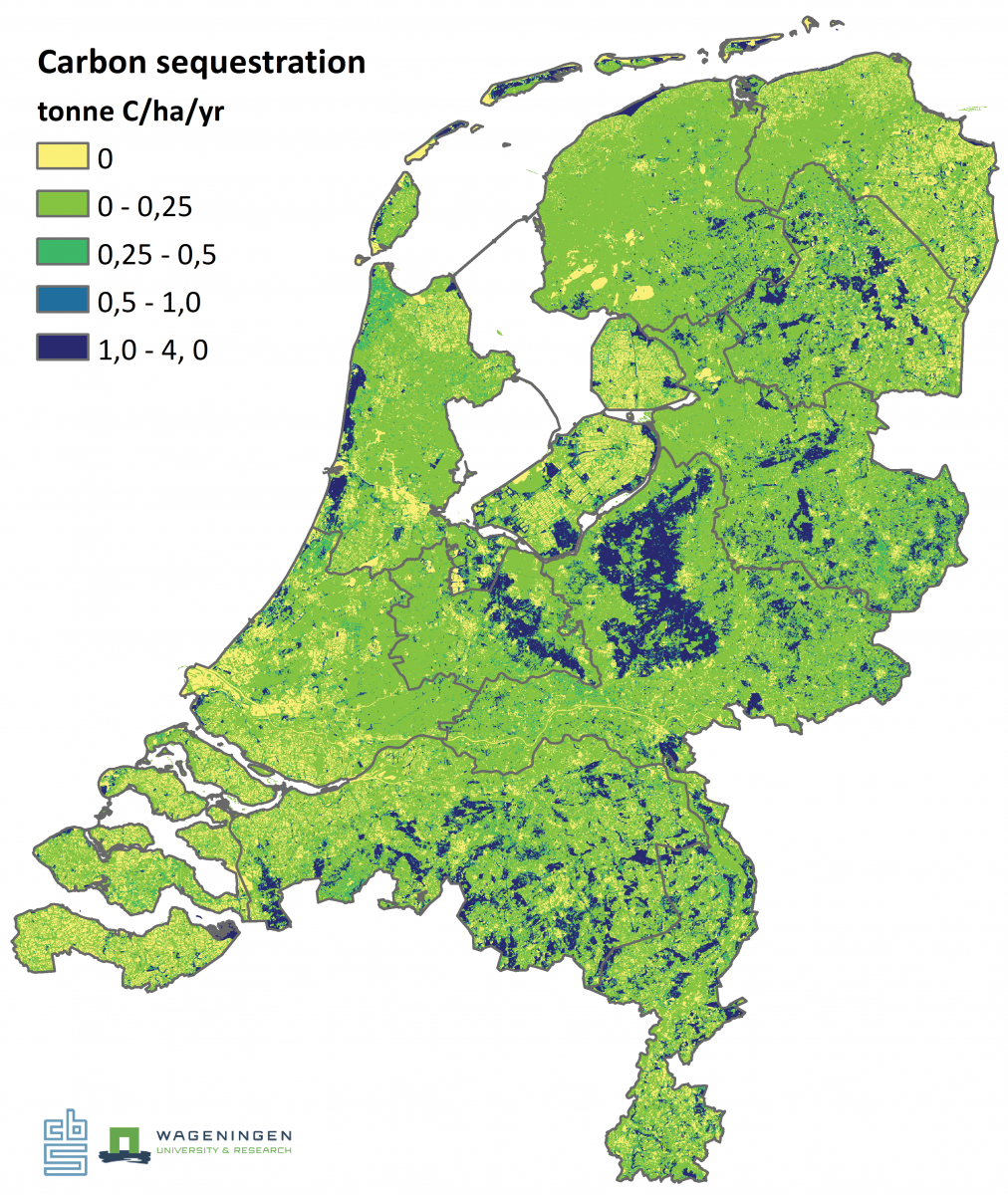 |

